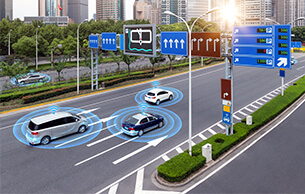How driverless cars can help the elderly

The way we view the world of automobiles is set to change quite dramatically in the months and years ahead, thanks to the emergence of driverless cars onto public roads. Mercedes and Lexus are just two well-known vehicle manufacturers to have announced that they are developing autonomous car technology, while Google has already tested its automated technology in the wild. Tesla has trialed its driverless Autopilot system on the road across the pond in the UK too, with rumors also flying about that Apple has begun working with BMW to develop its own car — a vehicle that is speculated to be automated as well.
Despite the day where we share roads with driverless vehicles appearing to be just around the corner though, a lot of the public are still skeptical about the technology. In fact, a survey by AAA suggested that around 75 per cent of the public are currently fearful about riding in a self-driving car.
However, autonomous vehicles have the potential to help so many groups in society — such as the elderly. This is especially apparent when considering the Surface Transportation Policy Project titled ‘Aging Americans: Stranded Without Options’. This study revealed that 20 per cent of Americans over 65 do not drive at all. Join award-winning straight stairlift manufacturer Acorn Stairlifts as they explore further just how driverless cars have the capability to assist older citizens…
The appeal of Waymo’s approach
Waymo has raced out of the blocks when it comes to their approach to driverless cars. A company which started out as the autonomous car division at Google, the firm’s driverless cars have already been driven at least 3.5 million miles in 22 test cities — with one test seeing a blind man successfully being able to complete a test ride by himself.
Throughout their development of autonomous vehicles, Waymo has been able to incorporate a variety of design elements which have the intention to help the elderly, as well as individuals with disabilities, when they are heading out on a road trip.
People on-board a driverless car who are hearing-impaired are sure to appreciate screens in the vehicle’s cabin which are around the size of a laptop computer’s screen, for instance. These screens allow individuals to follow a route, as well as view selected information such as any traffic signals, crosswalks, pedestrians, cyclists and other road users encountered while getting from A to B.
Then there’s the buttons found on a Waymo driverless car’s dashboard. People who are familiar with cars which have rolled off production lines over the past few years are likely to have already come across a ‘Start’ button. However, Waymo vehicles also come complete with a ‘Pull Over’ button and a ‘Help’ button that will begin a two-way voice communication connection with a control center when pressed.
You may not need to wait long to experience an autonomous vehicle from the firm either — plans are in place for the Waymo to launch the world’s first commercial driverless car service this month!
The British Transport Secretary’s views
With the public possibly only having weeks — or even days — left until they are sharing the road with autonomous vehicles, how do people feel about the technology?
Across the Atlantic, the British Transport Secretary Chris Grayling has gone as far as to claim that self-driving cars will transform the lives of the elderly and the disabled. Promoting the benefits of this new form of transport on both the economy and society in a speech made at the Association of British Insurers’ annual conference in London, Mr Grayling said: “The potential benefits of these new technologies for human mobility — and for wider society — are tremendously exciting.
“Many who can’t currently drive will be able to take to the road. Elderly people or people with disabilities which prevent them from travelling today will discover a new sense of freedom and independence.”
The British Transport Secretary was also keen to point out another benefit of autonomous vehicles, in that “self-driving cars should make road travel far safer by eliminating the biggest contributory factor in accidents today — human error”.
The AARP’s views
Speaking during an American Association of Retired Persons (AARP) panel discussion at the North American International Auto Show earlier this year, the AARP’s executive vice president Nancy LeaMond was keen to point out that senior citizens must be kept in mind while autonomous vehicles are being designed.
She explained: “This is a critical part of livable communities as we talk to mayors and other officials around the country.
“To be successful, people of all ages will need to trust the machine to do the driving and right now there is a very significant trust gap. A full three-quarters of U.S. drivers of all ages report feeling afraid to ride in a self-driving car.”
At the same panel discussion, Elizabeth Macnab of the Ontario Society of Senior Citizens’ Organizations pointed out that there are a few considerations which must be made to ensure driverless cars are indeed appealing to elderly people, including:
1. The vehicles should be affordable to senior citizens on a fixed income.
2. The vehicles should be accessible to senior citizens who need to use mobility aids and walking devices to get around.
3. The manufacturers of autonomous vehicles should commit to providing training to elderly people about how to correctly use a driverless car.
There are clear indications that driverless cars will be able to help the elderly — and other demographics — to remain on the road, making this shift in the automobile world a change we should be ready to get behind.








